The Long Haul (Part 3) Cabo to Chacala
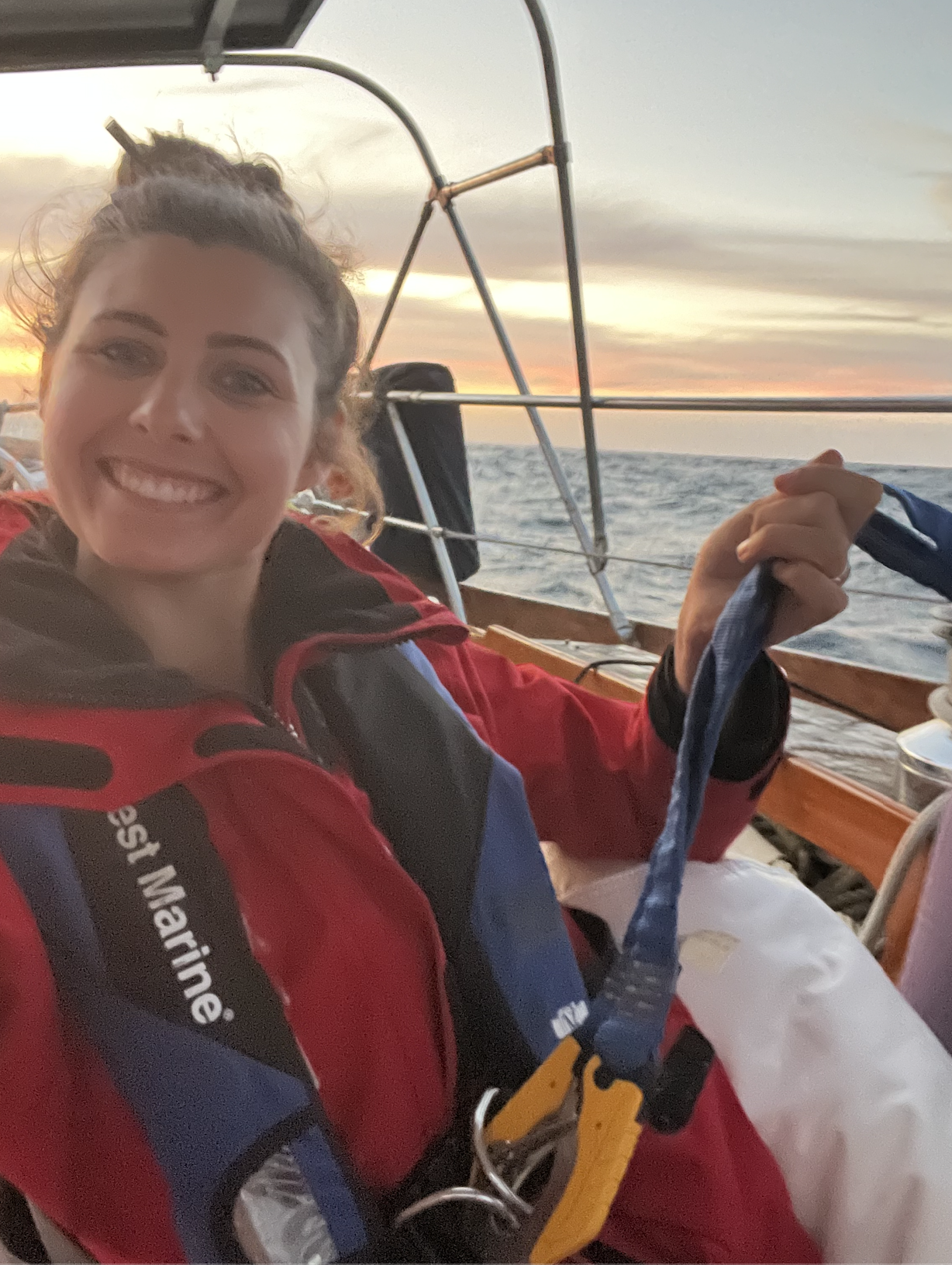
Clipped in for a bumpy night…
My jaw ached from hours of tightly clenching, while my fingers grew numb from white knuckling the companionway that I had braced myself within. It was February 16th, 2023 and We were crossing the Sea of Cortez from Cabo San Lucas with our course set for Chacala on the mainland where we had planned to rendezvous with Chris’s family, completely disobeying the cardinal rule of cruising: you can choose a time or a place, but you can’t choose both.
Despite the fact that the weather reports claimed there would be sporty winds blowing into the 20’s with moderate NW swells; we would soon come to learn that the weather predictions for this region were a gamble at best. That morning’s mellow sail turned uncomfortable when the swell clocked around to our beam, growing in size and shrinking in frequency. We were 40 miles southeast of Cabo when the NW swell reached ten to twelve feet hitting every six to eight seconds, breaking frequently over our beam. The wind was just as sporty as predicted, but at a much higher speed of 25 knots sustained with chronic gusts into the mid 30’s from behind us.
I was on the first watch of the night, trying to find comfort in my harness that was clipped into our dodger while keeping my eyes on the horizon. The only light that filled the jet black space ahead of us came from the breaking waves that painted the surface with glistening phosphorescents before the faint glow of the moon began to rise. It was around that time things took a turn for the worse.
*BANG*
… is never a sound you want to hear at sea, let alone at night. Chris sprung from below deck assessing the situation as I tried to free myself from the dodger. “What was that?” he asked, thinking we hit something. Yelling over the sound of the wind and sea, I hastily responded “it came from the rig! I can’t see anything!” It took a few moments to realize that our 130% genoa – that had been heavily reefed – had completely unfurled, which overpowered Avocet very quickly.
Disengaging our autopilot, I immediately broke off, putting the swell more on our aft quarter to further prevent rounding up. Avocet became a sled with hull speeds into the double digitals that under any other circumstance we would celebrate, but this time we were too busy trying to figure out a plan. I clipped into the helm while Chris secured himself to the jack lines, walking his way to the bow with a new furling line in hand. In horror, I watched his headlamp get snuffed out by the waves that managed to break over the bow, praying that Poseidon would spare him from a long fall into Davy Jones locker. On the bow he quickly realized our furling line had chaffed through at the drum that had been slightly ajar after months of use. We should have caught that the drum fence was not aligned properly before the chaos happened, but hindsight is 20/20 and we had to deal with the now.
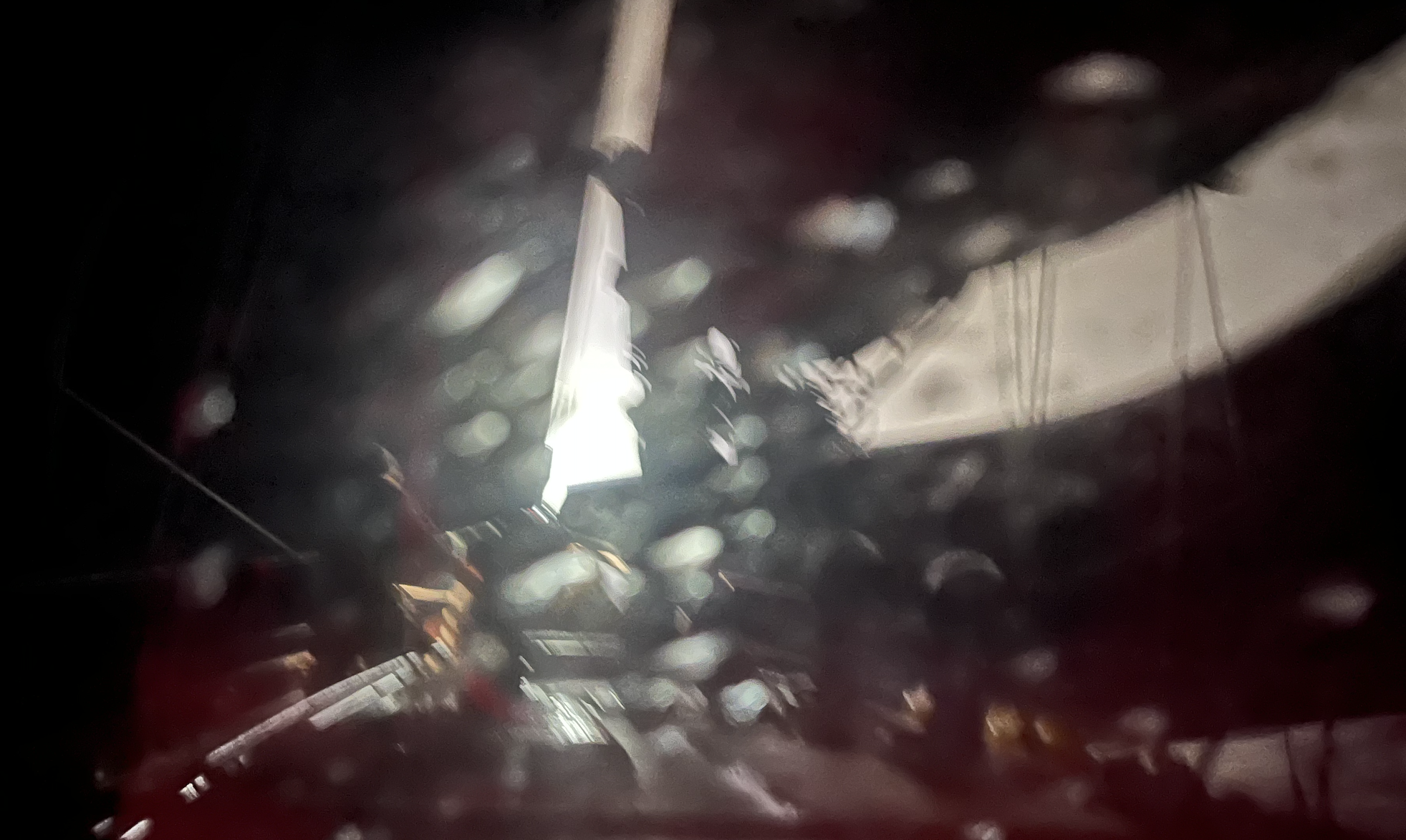
The only photo I managed to take that night
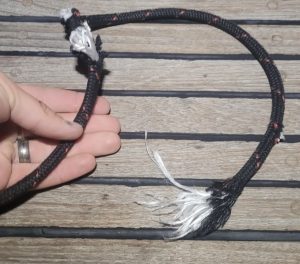
Chaffed line
At first, Chris tried to install the new furling line within the drum, but there was no way he could get enough wraps within the unit in its current state of stress. Thinking on his toes Chris returned to the cockpit to grab another line, kissing me on the forehead with eyes and a smile that said “we got this” before he scrambled back to the bow. There, he attached the bitter end of the line to the sails tack, and wrapped as many loops around the top of the drum as he could, essentially creating an external furling unit. Chris sat down, feet braced against our bulwark, and began to pull the furling line in. The wind was howling but couldn’t muffle the sound of his exertion-mixed-exuberance as the sail began to furl in.
Applying the same technique used when dousing our spinnaker, we utilized our main sail to shade the genoa, removing as much power as we could from the sail before blowing the sheet to make it easier to pull it in. Once the secondary-furling-line was secured to a cleat, Chris could remove the defunct line within the drum, install the new one and reef the sail again to get us back on course. This was a worst case scenario for a furler failure, but we are pleased that this method worked in a pinch and prevented us from having to pull the sail down, which would have increased risk for not only the crew but also the integrity of the vessel. It is worth noting that in high winds you should actively avoid coming into irons since there is a high probability it will shred your sails to oblivion and/or tangle lines.
With the excitement of the night behind us, Chris was too full of adrenaline – and salty – to go to bed, and took over the rest of my watch. Cleo was in our bed, curled up on my pillow waiting to cuddle. I grabbed my airpods and played my white noise playlist on repeat, doing everything I could to ignore the sea state and fall asleep quickly.
February 17th
I woke up moments before it was my turn to take watch with enough time to make myself tea and dig out a sleeve of saltine crackers. It was 6:00, and the swell had changed directions and started to follow us and had significantly decreased in size. I looked outside to see Chris clipped into the helm, bundled up in all his foul weather gear, and drenched in salt water. Although the sea state was calm I could tell that Chris had put up quite the fight up until that point.
Fortunately I was never kissed by the sea, remaining bone dry my entire watch with Cleo curled up inside my sleeping bag. We only had 27 hours to go before we would reach land, and it was finally starting to set in that we were actually going to make it. We had planned this adventure with Chris’s family months prior, thinking we would already be living our best lives in Mexico, but as you know we had many curve balls thrown our way. I thought about how far we had come as the gentle motion and sounds of the sea tried to pull me into sleep, but I resisted the temptation. Chris only slept for a few hours, confirming it was much rougher downstairs and instead decided to make breakfast for us.
We were officially in the tropics and the weather was behaving accordingly. The sun’s rays were strong and hot, inspiring us to shed our layers and sail naked – a dream we clung onto as a sliver of hope during the storms we weathered in California. It was a long day at sea and I am happy to report no sunburns were acquired, just growing grins and the increasing excitement to be with family on the mainland.
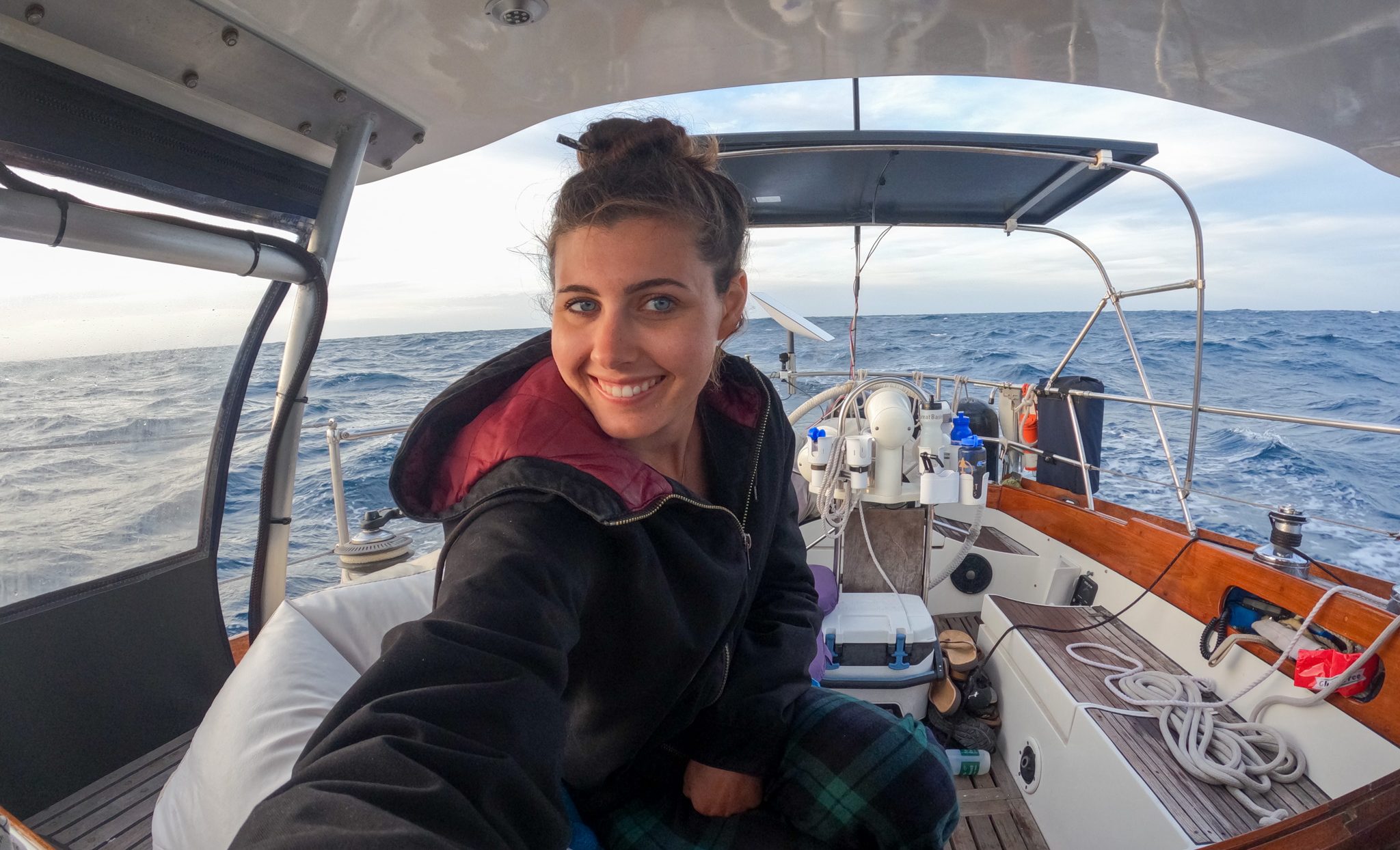
Before I ditched the jacket for a bikini top
February 18th – The Funk of the Earth
I had just gotten into sleep when Chris woke me up for my watch. Groggily, I rolled out of my berth into the head to wash my face. “Wind is holding well” he said, debriefing me on his watch. I went to pull on my foulies but Chris stopped me mid-way saying “you don’t need those anymore. It’s hot out there.” And although I was skeptical I was delighted to find he was right: we had finally made it to warm night watches.
Mars was on our stern, and we were in the middle of Taurus. The stars were bright above us as I did my best to identify the constellations that glistened in their unique formations. We were sailing with the spinnaker up for hours, but eventually the wind began to dwindle down so we switched to the headsail, then after bobbing around going less than a knot for an hour we decided it was time to tap in the Perkins.
At 1:00 a light flashed off our bow. Is that a boat? I thought, surprised since we hadn’t seen any traffic the past few days. Nothing showed up on AIS so I checked the chart. I counted the intervals of the flash and concluded it was the island light of Isla San Juanico – which meant we were about 100 nautical miles away from Chacala. If all went according to plan we were going to make it the same day Chris’s family would arrive which was purely an act of GOD, especially since we had disobeyed the cardinal rule of cruising.
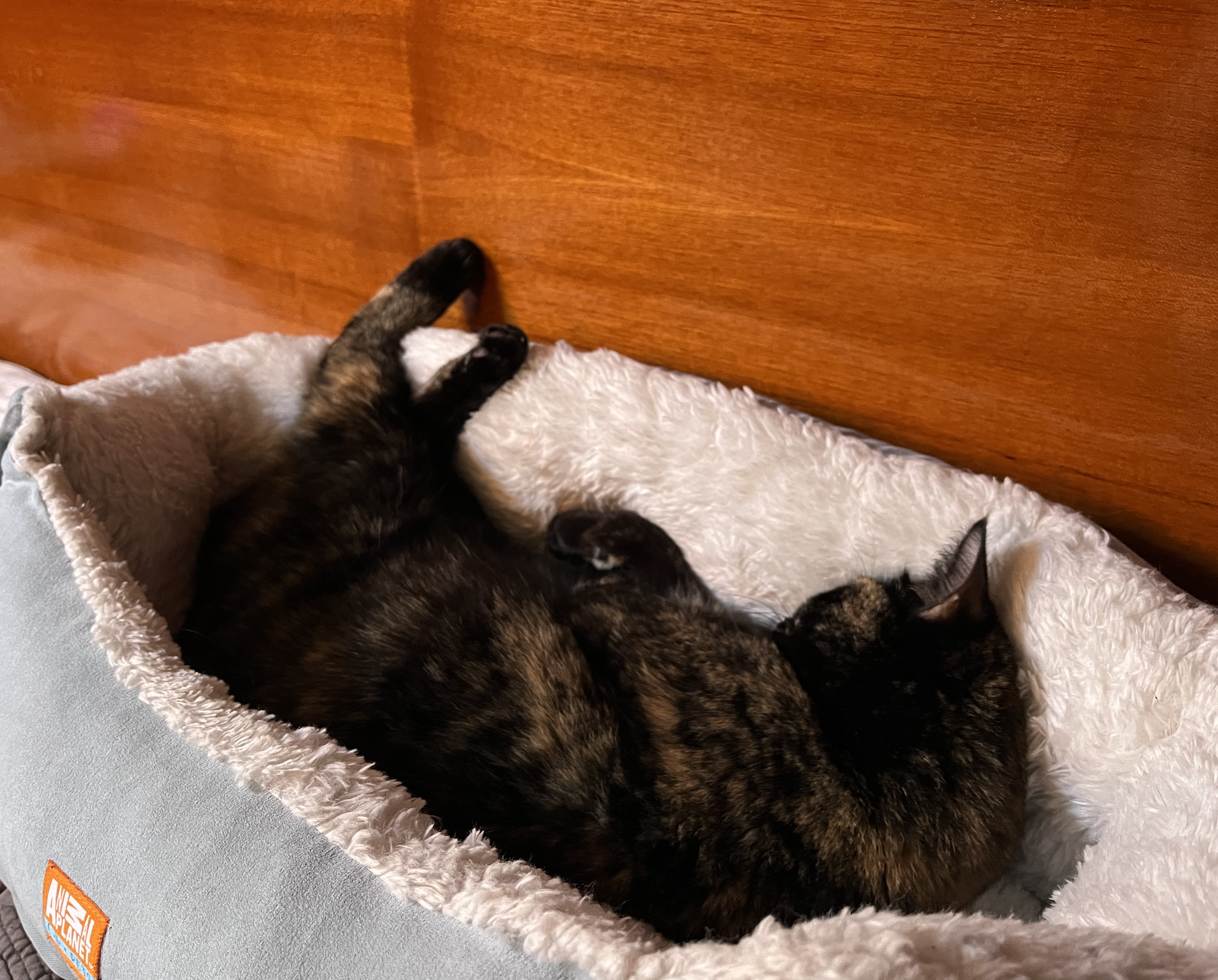
Cleo could care less where we are as long as she is in a comfy bed
Chris took watch from 4:00 to 6:00 while Cleo and I got some deep sleep down below. When the sun rose it flooded our cabin with golden rays that reflected off our varnished walls like a filter of thick honey. Remnants of Chris’s watch remained in the cockpit allowing me to paint a mental picture of his watch: A pot with ramen residuals sat next to the beanbag with a ritz cracker sleeve beneath it. The blankets and sleeping bag were tossed beneath the dodger and two of our three water bottles were empty. After rearranging things to my liking I sat down and caught up on my book, scanning the horizon every 10 minutes for long lines, boats, or other hazards.
At 9:00 We got word that the family had safely landed in Guadalajara and boarded their shuttle to Chacala – they said no one slept well on the plane, but I would trade a night of bad sleep airborne for a night of bad sleep on the sea anyday. A bait ball formed behind us as the familiar sound of seabirds infiltrated the steady rumble of the Perkins. Chris joined me with the offering of breakfast and watched the birds dive bomb into the sea, creating orchestrated chaos on the water’s surface. Whales beached in the distance, their liquid exhales allowing temporary rainbows to paint slivers of the horizon. It was another long, uneventful day spent appreciating where we were and practicing being present – which was easy to do since Starlink was still down, but did leave me with a bit of stress since I knew I would have a lot of client work to catch up on.
“Do you smell that?” I asked Chris. The sun was setting earlier than anticipated, since we had sailed into a new time zone without realizing it. Chris took a big inhale and scrunched his nose, taking a moment to decipher if the smell was good or bad. At the same time we realized that what we were smelling was the fresh funk of the earth: a deep smell of soil, trees and human inhabitance. It was 18:00, and land was very near. We reached the anchorage at 19:20, as darkness had just fell. Needle fish swam beneath us, glowing with a bioluminescent trail. There were a handful of other boats around us, all stern tied, so we found a good spot and dropped our primary then launched Winglet to deploy our stern hook. Our family had arrived safely to the villa that was on the cliffside, overlooking the anchorage. “Look for the red lights” Chris said on the phone to his mom. As we would soon learn, they had a prime view of Avocet from the villa’s deck. Exhausted from our passage I made Swedish meatballs and pasta for dinner, cleaned up the boat a bit then went to bed for some much earned rest. After everything we had gone through the past few months we had made it to exactly where we were supposed to be, and would unknowingly make the mainland “home” for longer than anticipated… but more on that later.
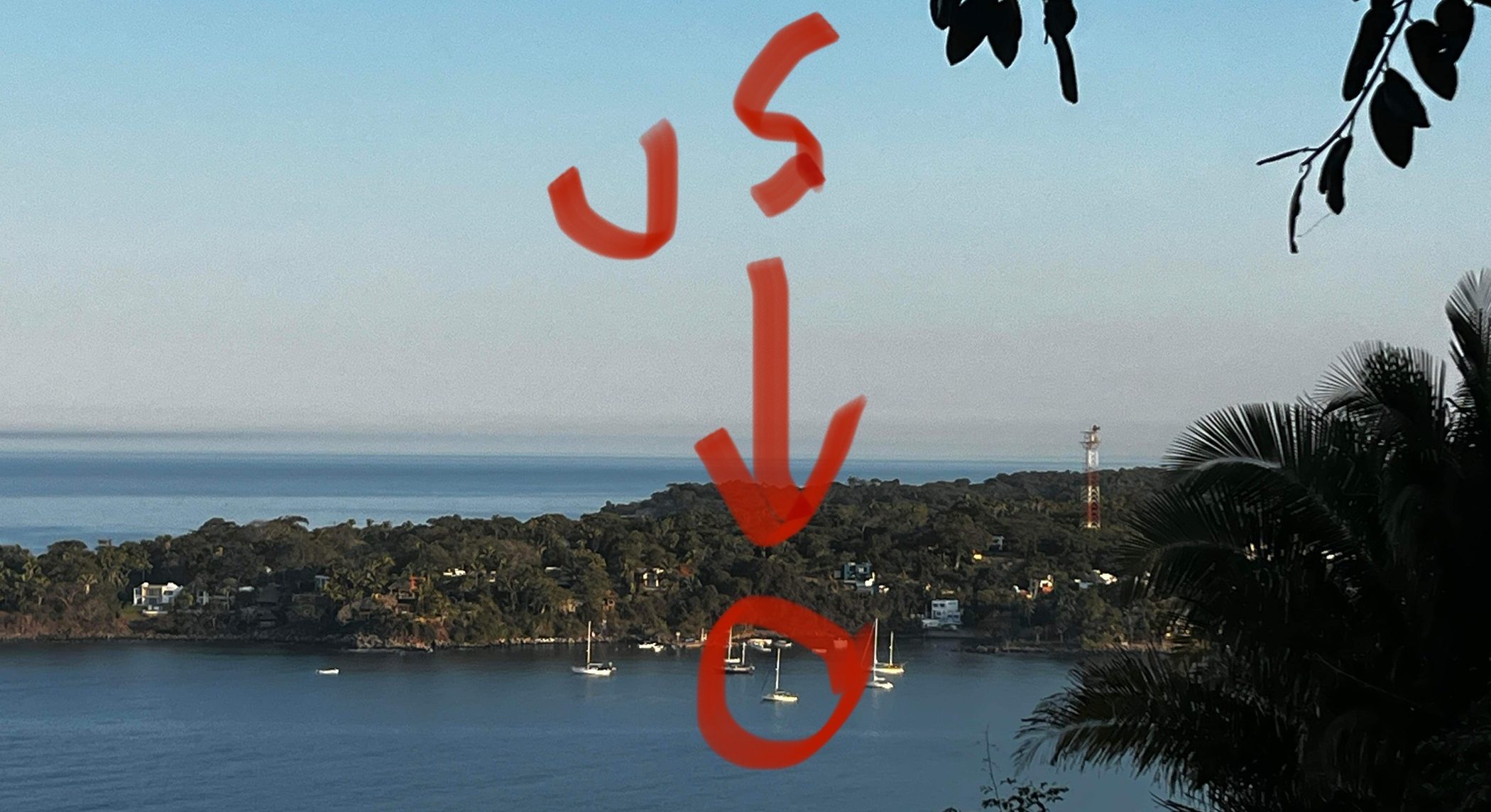
The view of Avocet from the villa
This is where the fun really begins, I cannot wait to share the upcoming posts with you all! It has been quite the journey and we are just getting started. Sending our love,
Marissa (and Chris and Cleo)
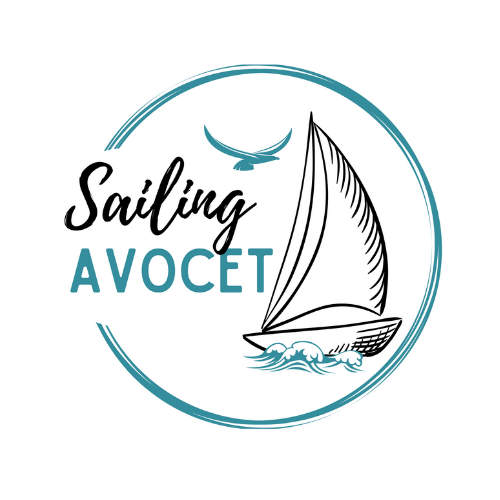


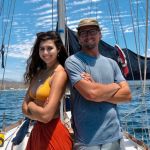

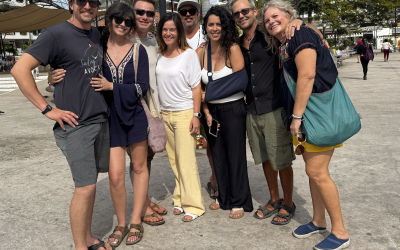
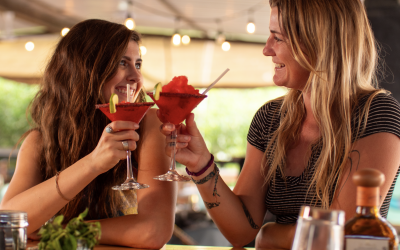

Well done. I remember our first passage on our Cheoy, Lee 41 Virgos Child all those years ago, similar conditions and problems. It’s the sea testing you out to see if you have what it takes to be a cruiser and its the boat testing you out to see if you are worthy of her trust
A 12 year 44000 nm circumnavigation later she had looked after us well and we had looked after her.Our dreams had been fulfilled and. I hope you have your dreams fulfilled on Avocet.
I always look forward to hearing from the crew of Virgos Child 🙂 The Sea wasn’t done testing us yet… nor was Avocet… but there’s more on that to come. We are loving life down here and feel like the hard work is paying off!